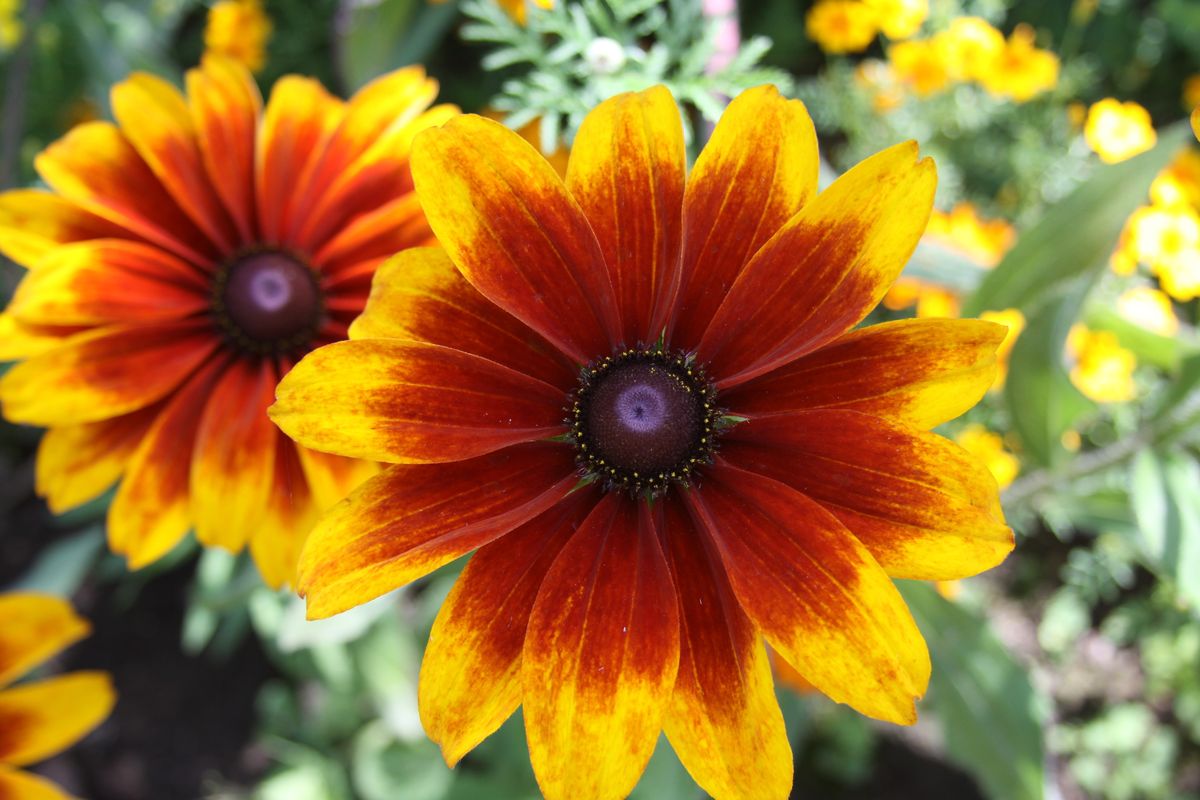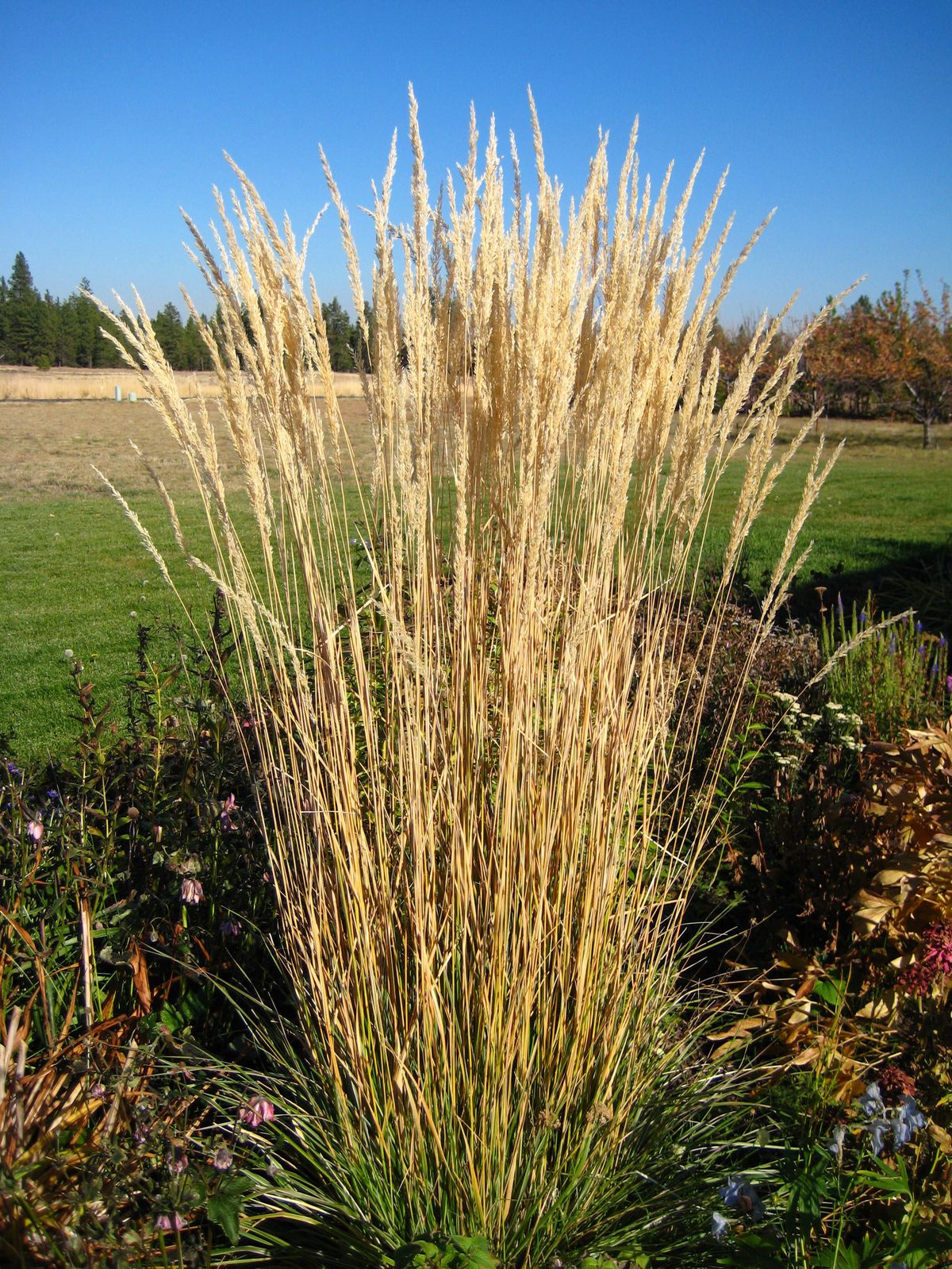Low-water wonders
Other plants that do well in hot weather include, top row, from left, Gloriosa daisy, Agastache and Achillea, and bottom row, from left, Profusion Cherry zinnia, black-eyed Susan and sedum Kamtschatka.
Is there anything perkier in the garden than a black-eyed Susan? While I’m not crazy about the name for obvious reasons, it’s certainly one of the toughest perennials you can grow.
After marveling at the way they have endured this hot summer, I decided to stroll through the garden to see which perennials and annuals have also done well. If this weather trend continues, drought-tolerant plants should be at the top of our shopping lists.
Black-eyed Susans (Rudbeckia fulgida) have yellow flowers with black centers and are hardy to zone 3. Goldsturm is one of the most popular cultivars. Gloriosa daisies are another type of Rudbeckia. They are hardy to zone 5 and come in fabulous colors: some of my favorites are Prairie Sun, Cappuccino, Cherokee Sunset and Cherry Brandy. All are deer-resistant, love the sun and attract butterflies.
If you’re looking for super-tough perennials, stonecrops (sedum) are a must. They have succulent leaves, come in a variety of heights and have appealing flowers. The best-known stonecrop is Autumn Joy, with its pale-green leaves and fall-blooming, pink flower heads that bees find irresistible. SunSparkler Dazzleberry is a new groundcover stonecrop with blue foliage and large raspberry-hued flower heads. Two stonecrop groundcovers that have performed well for me are Kamchatka (S. kamtschaticum) with its cheerful yellow flowers, and Angelina (S. rupestre), which features chartreuse needlelike leaves that change color in fall.
Succulents are the toughest plants you’ll ever love. Everyone’s heard of hens-and-chicks, right? It’s in the genus Sempervivum and is a very hardy perennial. I’m growing several in some of the most inhospitable parts of my garden and they perform beautifully year after year. In addition, they multiply at a reasonable rate, giving you extra plants to poke into other areas of the garden or for containers and vertical gardens.
Hummingbird mint (Agastache) is an excellent, drought-tolerant perennial. As its name implies, hummingbirds adore the nectar-filled flower spikes that bloom in sunset colors. The gray-green foliage is fragrant although deer apparently don’t think so.
Two bombproof yarrow (Achillea ) cultivars are Moonshine and Coronation Gold. With their glow-in-the-dark yellow flowers, they’ll provide wonderful accents in your garden. They attract butterflies, are very easy to grow and are deer-resistant.
Even though Karl Foerster feather reed grass (Calamagrostis acutiflora) doesn’t have blossoms, you’ll be very pleased with its performance throughout the spring, summer and fall. The attractive, 4-foot-tall leaf blades gently sway and rustle in the breeze. In early summer, golden plumes rise above the foliage, providing interest in the garden.
What about tough annuals?
I’m crazy about zinnias, and for good reason. This colorful plant loves the sunshine and heat, blooms for a long time and makes a terrific cut flower. Some of my favorites, which are all Z. elegans, include California Giants, cactus-flowered and dahlia-flowered varieties. Three with mounding growth habits that I can’t imagine not having in my garden every year are the Profusion series (Z. hybrida), Zahara (Z. marylandica) and Persian Carpet (Z. haageana).
Another colorful annual is the calendula, or pot marigold. Primarily available in shades of orange or yellow, the calendulas in my garden have put up with this summer’s heat and bloomed their hearts out. Cultivars vary in height from 6 to 24 inches. As long as you haven’t used any chemicals near the plantings, remember that the flowers are edible. In addition, pollinators and butterflies find them irresistible.
I hope this will give you some ideas for outstanding drought-tolerant plants to use in your landscape.

